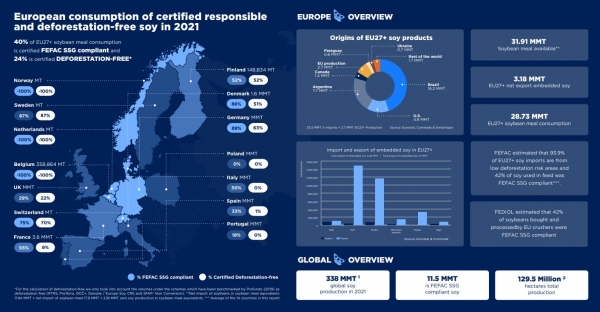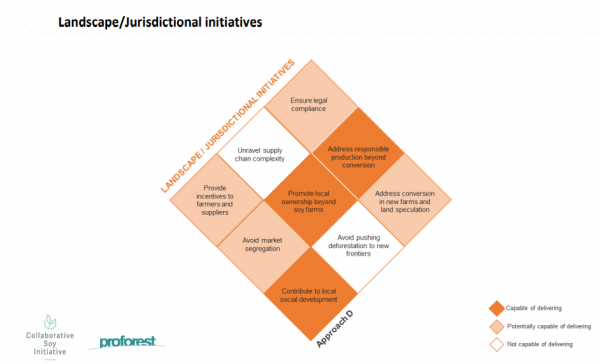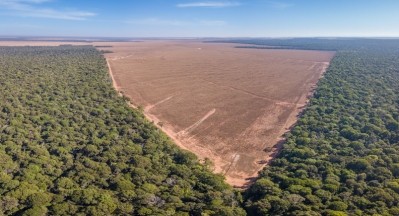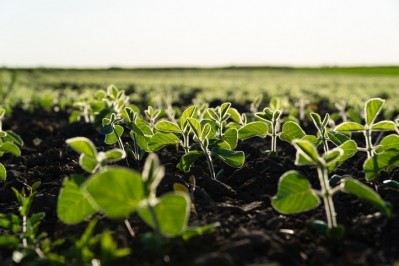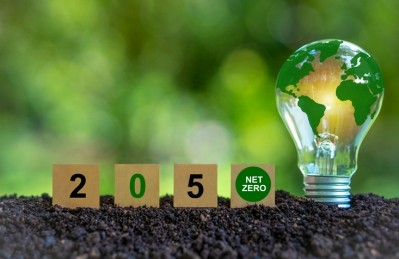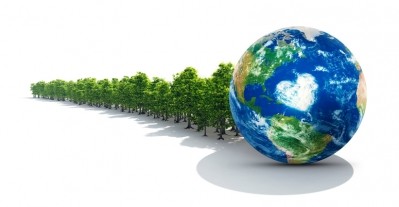IDH: A raft of voluntary and mandatory approaches needed to address risk in soy supply chain
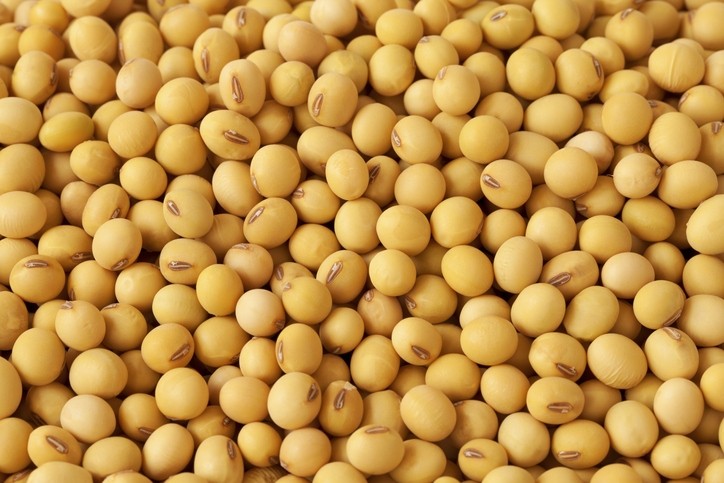
Multiple solutions in supply chains and landscapes are required to secure sustainable soy production and protect important ecosystems such as the Cerrado and Gran Chaco, reads the European Soy Monitor 2021 publication, which was published late last month.
The report acknowledges that a diversity of voluntary based approaches, in addition to mandatory models, is needed to address the risks in the soy supply chain, from certification, moratoria, landscape approaches, clean supplier tactics, partnerships and carbon footprint programs.
“These approaches are seen as complementary rather than competing and have the potential to make a significant impact on the transition to deforestation and conversion-free soy. While progress has been made, there are still challenges to overcome.”
Brazil and the US continue to be the world’s biggest producers and China by far the biggest soy consuming country. European soy production increased from 2,681,690 tons in 2020 to 2,712,900 tons in 2021.
Certification of EU soy
The report revealed that 40% of the EU27+ soy consumption was certified under a FEFAC Soy Sourcing Guidelines (FEFAC SSG) compliant standard and that 24% was certified as deforestation and conversion-free.
However, the data shows the uptake of FEFAC SSG compliant soy decreased in 2021 with 40.1% compared to 43.8% in 2020. The percentage certified conversion-free soy also showed a slight decline during the same period.
Part of the 14.3 million tons of soy that is considered FEFAC SSG compliant was sourced via a physical chain of custody model and part was covered by credits supporting responsible soy: “An estimated 19% is traded via the segregated chain of custody model, 43% is traded via the mass balance model and 38% is covered by sustainability credits supporting responsible soy.”
Although 17 standards were FEFAC SSG compliant in 2021, only seven standards provided information.
“RTRS, SSAP, Donau Soja, CRS and SFAP show an increase in certification and in sales to market actors in the EU27+. For ProTerra and ISCC, a decline can be observed. None of the traders, except for Cefetra, provided data about their company owned FEFAC SSG compliant soy standard. Amaggi informed us that their own soy standard was discontinued and transformed in a traceability-based approach called ORIGINS.”
Mixed picture throughout Europe
The country specific data collated in the report shows a mixed picture throughout Europe.
It shows the Netherlands, Belgium, and Norway source more than 100% of their soy consumption under a FEFAC SSG compliant, deforestation and conversion-free soy standard. In Belgium and the Netherlands, the total soy footprint is covered by credits supporting responsible soy. In Norway, the soy used in aquaculture and compound feed is FEFAC SSG compliant and deforestation and conversion-free, sourced via the segregated chain of custody model.
The report highlights how Sweden, Denmark, and Germany source more than 80% of their soy consumption under a FEFAC SSG compliant standard and more than 50% under a standard that offers deforestation and conversion free soy. In Denmark and Germany, also food companies are actively investing in responsible soy via the acquisition of credits supporting responsible soy or by buying segregated sustainable, non-GMO soy. Sweden is, like Norway, committed to sourcing physical deforestation and conversion free soy with a large share of Proterra soy in the supply chain.
In Switzerland, the Swiss Soy Network is promoting the import of sustainable soybeans. In the EU Soy Monitor more than 75% of the soy consumption is FEFAC SSG compliant and deforestation and conversion-free.
France and Finland source more than 50% in line with the FEFAC SSG. "In Finland also the percentage of deforestation and conversion-free soy is above 50%, for France this is not the case. In Finland, companies from both food and feed are acquiring RTRS credits supporting responsible soy and in a small sector this results in a high percentage FEFAC SSG compliant soy. In France, the Duralim initiative supports the uptake of responsible soy."
Then there is a large group of countries such as Spain, Portugal, Italy, and the UK that source around 30% of their soy consumption under a FEFAC SSG compliant standard, noted the IDH.
The UK, Spain, and France, adopt a risk-based approach to responsible soy – focusing more on lowering the risk of deforestation and conversion than on sourcing certified sustainable soy.
For Poland, no data were available.
Data availability remains challenging
Data availability is still challenging, noted the IDH report.
“The underlying information obtained from the feed associations is not always complete and often only aggregated numbers are provided. There are different reasons for that. In some cases, the number of market players in a country is so small that sharing information is competitively sensitive. In other cases, the market has so many small players that data collection is challenging. For others, data collection is not a priority.”
The Soy Magicube
The IDH outlines how the Collaborative Soy Initiative (CSI) and Proforest have designed the soy magicube including six voluntary approaches to achieve conversion-free responsible soy production.
“The Magicube demonstrates that there are multiple instruments needed for the transition to responsible soy supply chains. Examples are robust certification schemes, biome-wide moratorium, clean supplier approach, landscape/jurisdictional initiatives, pre-competitive initiatives, and carbon footprint framework. The magicube provides insights on how particular goals can be achieved using the instruments at hand. The visualization of the instruments and goals show that a smart mix of approaches is necessary to achieve sustainable soy production at scale.
“A landscape approach, also known as a jurisdictional or integrated landscape approach, is a framework for inclusive and multi-sectoral land use management and territorial development. In principle, local or state government, private companies, civil society, producers, smallholders, NGOs, and any relevant stakeholders for a given area can be integrated into a governance structure for that area.”
The CSI also demonstrates, using the magicube, that the EU Deforestation Regulation (EUDR), needs additional voluntary instruments.
